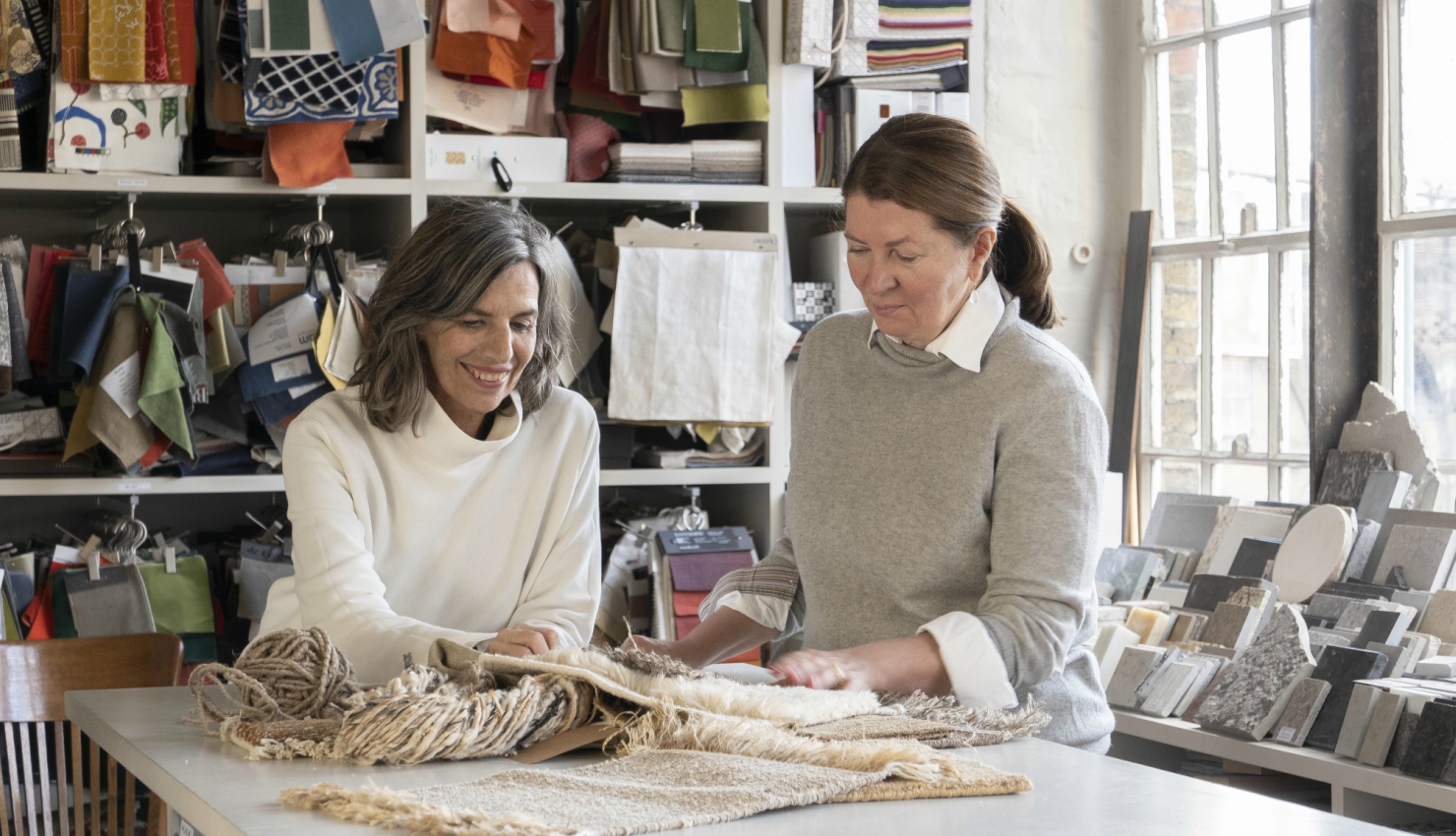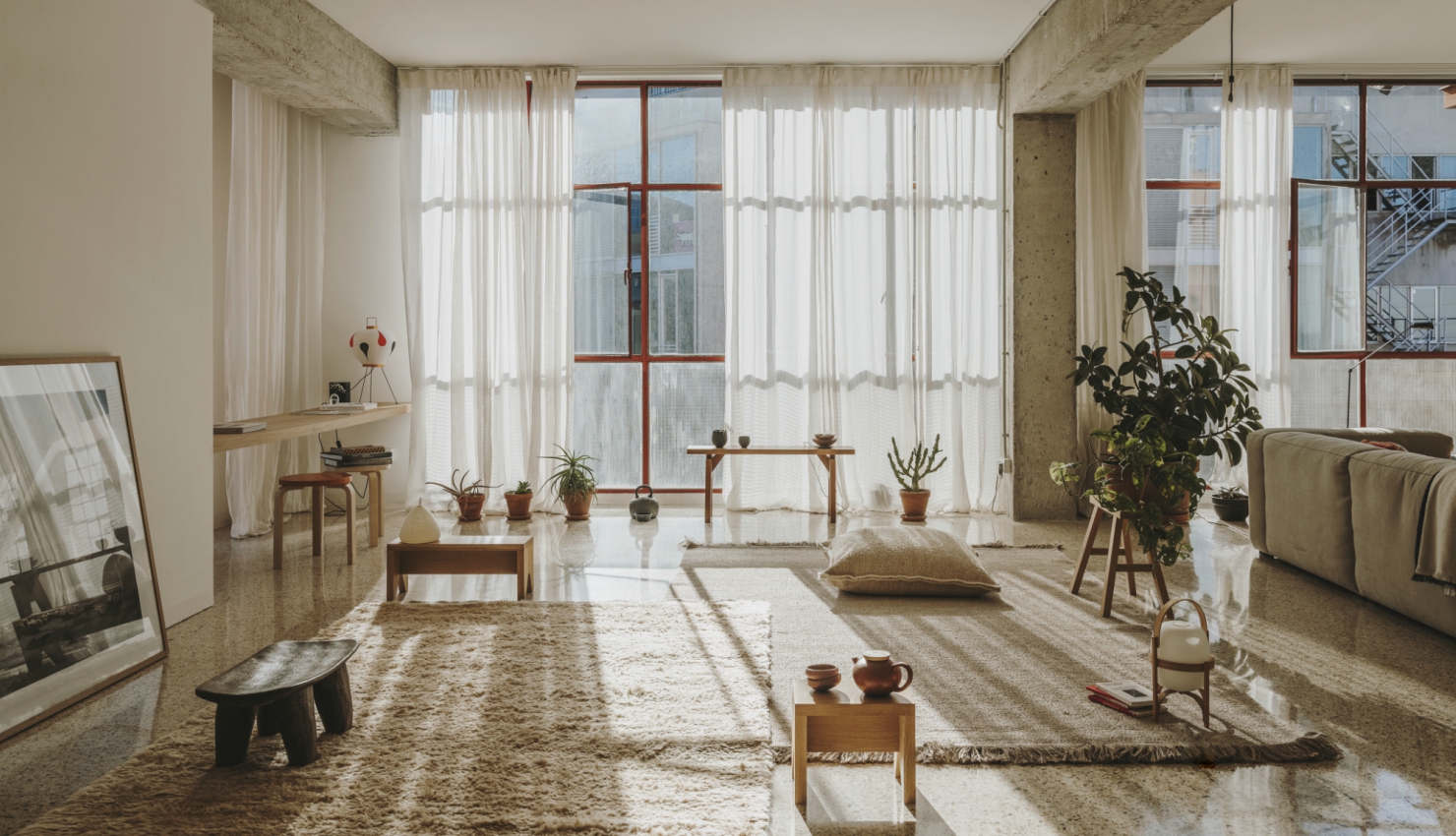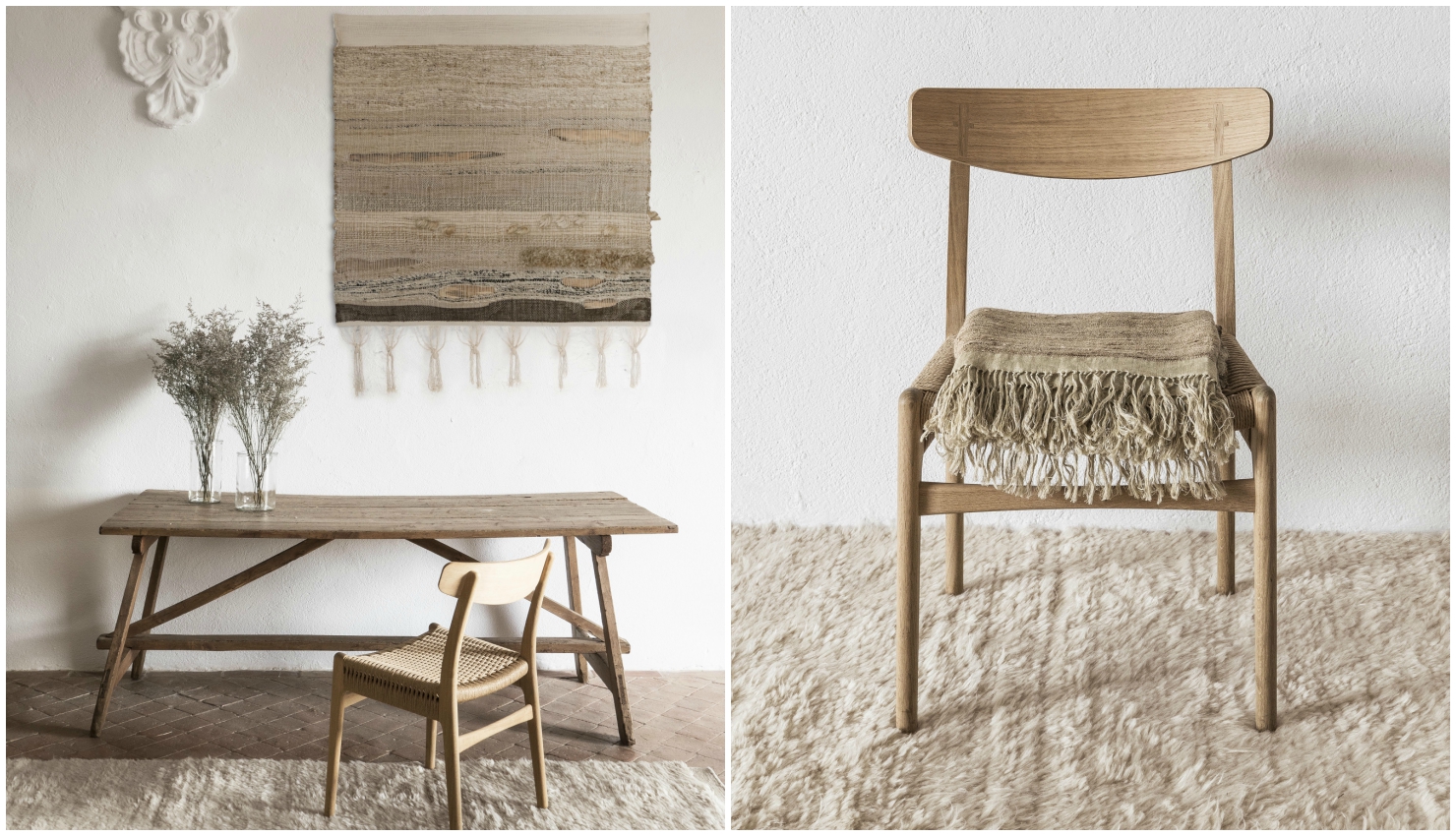Ilse Crawford, Nani Marquina, and her daughter, CEO of the company Maria Piera Marquina, discussed what “Well-being” means to them and the process of creating the collection.
This is just the first talk in the Woven Talks series, an initiative by Nanimarquina to bring us closer to four of their most recognized designers. The moderator for this first talk with Ilse Crawford, which lasted 50 minutes, was the writer and design consultant Max Fraser.
The Spanish company Nanimarquina is one of the international references in the field of interior design and contemporary rugs. The family brand founded by the Barcelona-based designer, entrepreneur, and philanthropist Nani Marquina has been creating rugs from sustainable materials for over 30 years.

Nani Marquina and Ilse Crawford
Ilse Crawford is a British interior and furniture designer and the founder of Studioilse, based in London. Crawford began collaborating with Nanimarquina in 2017, and this partnership gave birth to the Well-being home products collection. It consists of cushions, rugs, a pouf, a wall tapestry, and a hammock made from hand-spun natural fibers without dyes. These products represent the epitome of sustainable and high-quality craftsmanship.
How the “Well-being” sustainable collection is created
Ilse Crawford explained that when Nanimarquina proposed the idea of creating a collection three years ago, she began to think about what she could bring to the table that hadn’t been done before. In the end, they established four criteria for the collection to have the least possible impact on the environment and on the people who work creating the pieces, which is also very important: not to use dyes, not to use bleach, to use local natural fibers that were hand-spun. All this is to reduce environmental impact as much as possible and at the same time, support the local economy.
This reflects Nanimarquina and Ilse Crawford’s commitment to sustainability. It’s been 10 years since Nanimarquina launched its first natural collection. However, the project with Ilse gave them the opportunity to work on a collection without the use of color, which Nani emphasized was important for greater sustainability.

Nanimarquina “Well-being” collection in collaboration with Ilse Crawford
Creating a collection without dyes or bleach was a bit challenging for Nanimarquina. It meant the need to find new suppliers, which led them to work in Nepal for the first time. The manufacturing process is also very lengthy: “You have to grow the plant, harvest it, clean it, dry it, clean it with softener. It’s a long process,” Nani Marquina explained.
Investing in local labor is a beautiful way to create employment, and as Ilse emphasized: “The role of a designer is to create designs that sell so that jobs can exist.”
The meaning of the “Well-being” collection
Both Ilse Crawford and Nani Marquina had time to explain what the concept of Well-being means to them:
For Ilse, it’s something that opposes the measurable world. The world that measures everything by GDP. She believes that the idea of systemic well-being is very important, the idea that there are basic human values such as human happiness, health, community, and sustainability. Well-being is a word that unites them. Systemic well-being consists of seeking a society that integrates all those things into one. For Ilse, a project like the “Well-being” collection shows how it’s possible to create something better.

Nanimarquina “Well-being” collection in collaboration with Ilse Crawford
On the other hand, according to Nani, one of the most important things to create that Well-being is to know the origins of the fibers. She defines it as a feeling of comfort. She explained that in her country house, the decoration of her living room connects with the landscape around her: the trees, the flowers, and also the sea. In her words: “For me, this is Well-being. Connecting the exterior of the house with the interior, with the materials that give me this message. Connection with nature. In my office, this is impossible, there are many tables and computers, but I reproduce this feeling with plants. Plants are also Well-being for me.”
The importance of transparency in the creation process
Maria Piera, CEO of Nanimarquina, explained how they ensure the well-being of both workers and pieces in the creation process. To start, their relationships with suppliers are usually long-term, from 20 to 50 years, which allows them to create a very close bond and have more confidence.
It also helps that they have very few suppliers, between 2 and 3. This allows them to implement all kinds of procedures, such as audits, without any problem. This way, they control how local workers are paid and treated. Finally, since the beginning of their production in Asia, they have been financing the Health and Care of their workers to build schools and health centers where their children can grow up.

Nanimarquina “Well-being” collection in collaboration with Ilse Crawford
The British designer wanted to emphasize that in her studio, they always work with companies in which they know they can trust their process. She said that this is one of the reasons why they have remained a relatively small studio. Because they do everything possible to work with people they trust completely.
The impact of Covid in 2020 and new projects
At the end of the talk, the three speakers had time to talk about the positive consequences of the pandemic and future projects.
Ilse: We spend too much time on technology, so we have started to value the normal things that make up our lives. The simple things of daily life like cooking together or a glass of wine at the end of the day. It’s time to get to know our neighbors or start growing a garden. That’s positive.
Nani: Ilse explained it very well. I think after Covid, we will be a little different, perhaps more sensitive, more sustainable.
Maria: We started a project 2 months ago using wool remnants. The idea is to reuse the material in a rug, without dyes and without transforming the wool, to keep it very simple. We are also focusing on biocide treatment to prevent virus retention in rugs, it is a nanotechnology treatment.
In the next 3 talks in the Woven Talks series by Nanimarquina, we will be able to chat with the designers: Ronan Bouroullec, Santi Moix, and Jaime Hayon. Discover all the information on Woven Talks.
Images provided by Nanimarquina.




